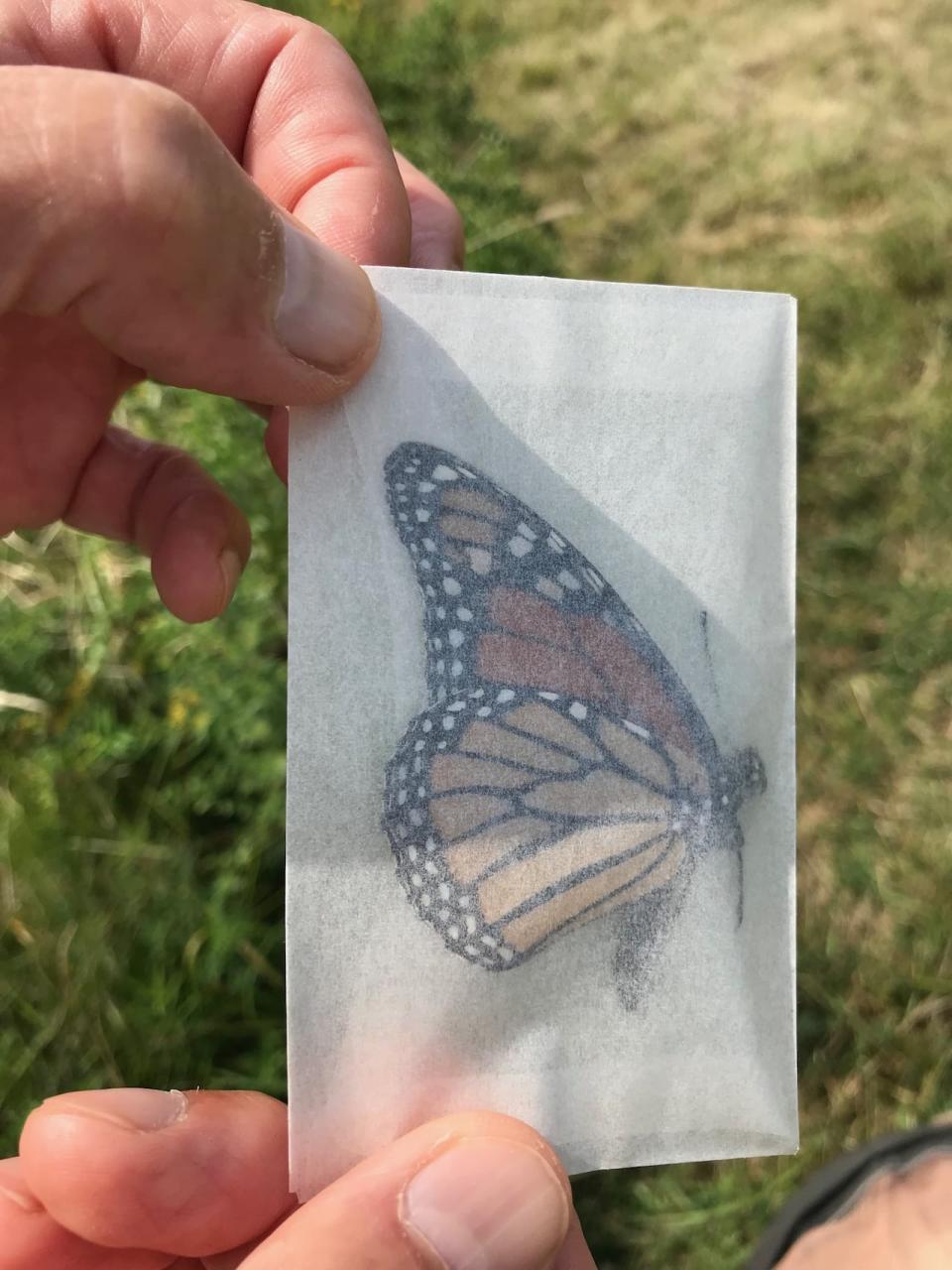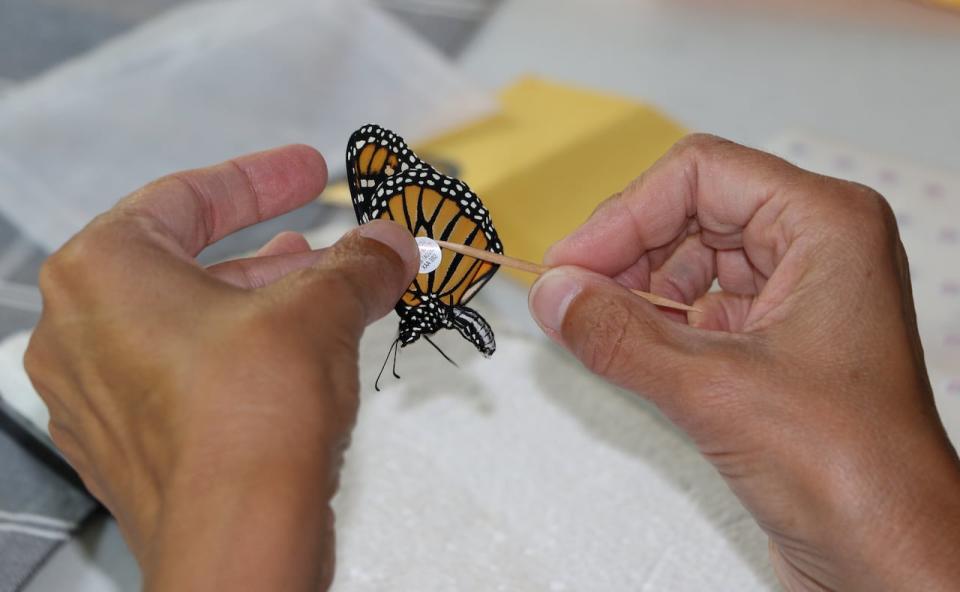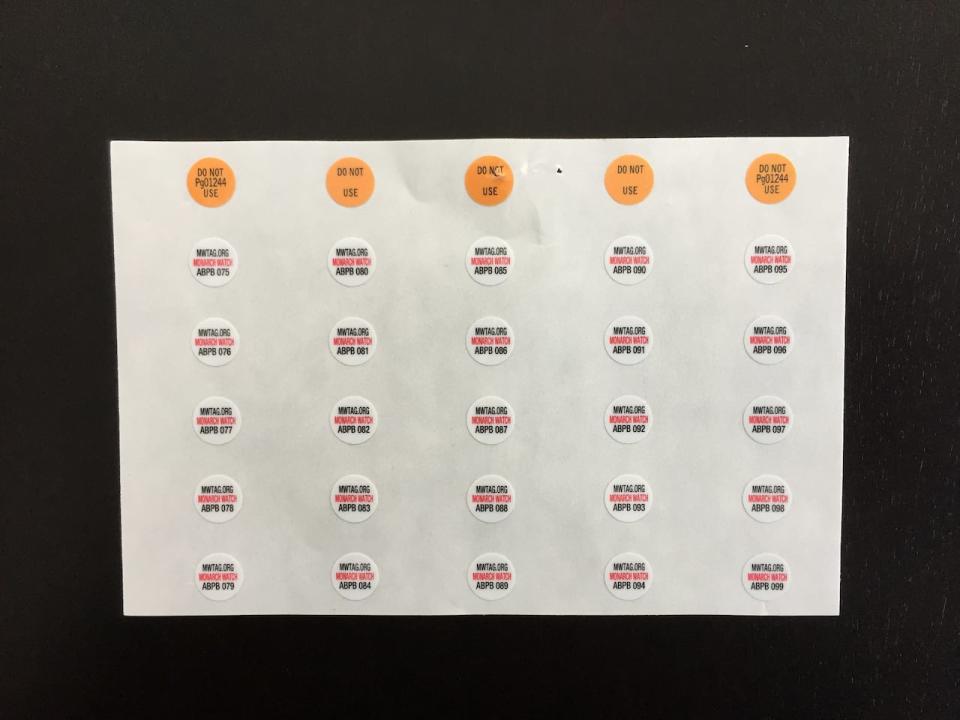Monarch butterflies worried naturalists last year with a shockingly low presence in the province, but a team of butterfly taggers say this year the species is showing signs of recovery.
Members of the Saint John Naturalists Club head to Point Lepreau each September to tag the butterflies in the hope of tracking their migration journey to Mexico and monitoring their health and population.
Birder and naturalist Jim Wilson said in the first week of tagging, the club tagged 136, a jump up from last year, when 97 were tagged in total.
“There are certainly more monarchs this year than last,” Wilson told CBC Radio’s Shift.
Wilson said he is also hearing of more chrysalises that have yet to hatch. “There are still quite a few monarch butterflies to come out to start to migrate.”
He said monarchs seem to be setting off later this year than last, “possibly because the butterflies seem to come a bit earlier.”

Naturalist Jim Wilson said monarch butterflies are surprisingly easy to handle and aren’t as delicate as one might assume. (Submitted by Jim Wilson)
Monarch butterflies always leave Mexico at the same time, and the determining factor for when they arrive to Canada is weather, said Wilson. “We had excellent weather this summer, as we all know.”
Milkweed is the only plant that monarch caterpillars can consume and lay eggs on, so the plants are also crucial for reproduction.
Wilson believes there were two generations of butterflies produced this year, which would explain why the second generation is late to hatch.
Declining population
While the club is feeling optimistic about monarchs in New Brunswick, Wilson said the overall population of the species has been “grim” for decades, with a 90 per cent decline in the last 30 years.
Tagging efforts are most common in the United States, with the University of Kansas spearheading a program that provides tags to naturalists across North America.


Wilson said monarch butterflies are tagged each year in an effort to track their migration to Mexico and monitor their health and population. (Submitted by Jim Wilson)
Just three years ago, the Saint John Naturalist Club tagged about 1,000 monarchs with tags provided by the university.
In 2022, the club lowered number of tags it received from the program to 500, Wilson said, because tagging a thousand butterflies is a lot of work, and then 2023 saw a very low monarch presence.
The butterflies gather each year for migration and the population is measured by hectare — meaning the area completely covered by monarchs.
The all-time high was about 18.19 hectares in 1997, according to Monarch Watch website. In more recent years, the average population dropped to 2-3 hectares.
Once caught, the butterflies receive a small tag on the hind wing. Any damage or deformation is recorded after weighing each butterfly and measuring its wing length. And how much does a butterfly weigh? Very little, sa Wilson.
“It’s just a matter of a fraction of a gram.”
Each butterfly is put on a little dish and weighed, Wilson said. The weight of the dish is subtracted from the total.


The University of Kansas spearheads a program that provides tracking tags to naturalists across North America. Wilson said the Saint John Naturalists Club orders 500 tags through the program each year. (Submitted by Jim Wilson)
Monarchs are also examined for a protozoan parasite called, Ophryocystis elektroscirrha, that looks like tiny, pepper-like black grains under a microscope.
“We’re finding very low incidents of protozoan here on our butterflies, just a few in the 136 that we have tagged for far this year and virtually none last year,” said Wilson.
He said these parasites aren’t lethal to butterflies or dangerous for humans, but they are thought to weaken the butterfly.

